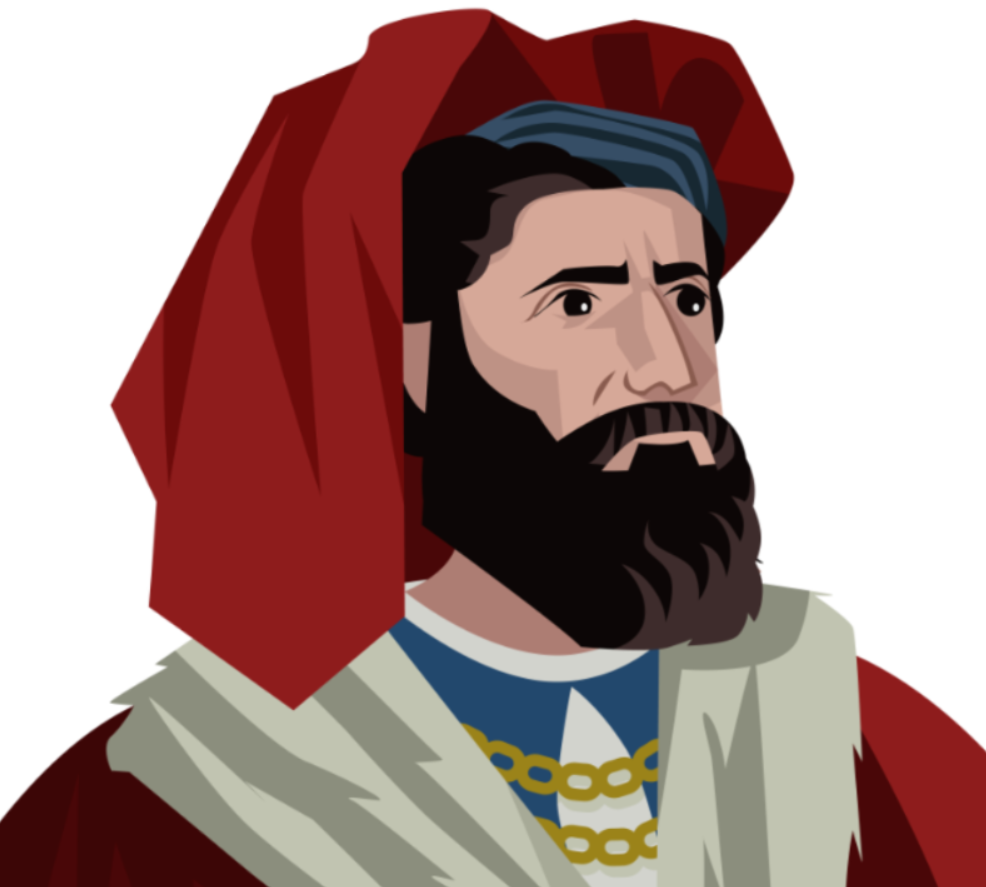- UNITS
- Unit 5 - Venice & Marco Polo
- The Game of Words
- Prof. Xue and Luk's Conversation
- An Active Reader
- Asking Questions
- Language Knots
- Test Corner
- LEARNING

♦ This introductory exercise aims to give you a feel for the sound and rhythm of the language, whilst presenting an overview of the maritime topic at hand. ♦ By reading and then listening to the accompanying audio, you’ll discover how words are pronounced and some simple sentence structures. ♦ Once you are comfortable with how the written and spoken words are connected, you’ll be ready to focus on keywords in the next exercise.
Venice and Marco Polo
If the Vikings were the great maritime power of Northern Europe and the Atlantic, then the Venetians were the great maritime power in the Mediterranean after the Roman Empire. If the Vikings were explorers or raiders, then the Venetians were pure merchants. Their wealth and art were legendary, and their stories of the East helped open Europe’s eyes to Asia.
Venice grew as a commercial centre towards the end of the first Millennium. The Frank (modern-day France) and Byzantine Empires were two of the largest powers at this time, and the East-West route was the most lucrative trade route. Earlier, this trade route was across the land of the Byzantine Empire, but the Venetians started to take more of this trade across the Mediterranean. The Venetian trade agreements with the Franks and Byzantines allowed Venice to become extremely wealthy, they also traded in slaves with Egypt.
Venice became a European centre for the arts and sciences because of its wealth and connectedness. Venetian merchants developed early systems of banking, maritime insurance and investment. The first record of the compass in Europe is also from Northern Italy in 1187, the Venetians copied the device from Arab traders. The ship-builders of Venice were also famous, they used galleys for carrying cargo, and they built merchantsmen with strong hulls of Roman design. At its peak in 1400, Venice had as many as 3,000 ships with 38,000 sailors.
Between 1200 and 1380, Venice was competing with Genoa over the Mediterranean Sea trade. Here we find the most famous son of Venice - Marco Polo. In 1254, Niccolo Polo lived with his brother, Matteo, as jewelry merchants from a warehouse in Constantinople. When Genoese merchants began to control trade routes, the brothers travelled eastward, reaching Bukhara. The furthest East that Europeans had reached before this journey was Kiev. The Polo brothers travelled further East again, found the court of the Great Kublai Khan, and they worked as officials here and became wealthy. After a decade, the brothers returned home. Niccolo took Marco Polo, his 17 year-old son, on another voyage East to China in 1271.
Nobody heard news of the Polo family for 23 years, when they appeared back in Venice they were wearing Mongol clothing and had long Asian moustaches. Young Marco was forced into military service against the Genoese. He was captured and was held in a dungeon, here he told his stories of the East to a fellow prisoner, who wrote them down. “The Travels of Marco Polo” became a famous book, as Europeans knew so little of the Far East. The account is colourful and incredibly detailed. There is certainly lots of exaggeration; many readers are skeptical over how truthful Marco really was.
The short version of Marco’s story was that the family had again reached the court of the Great Khan, and whilst there they won influence and power. The book describes the journey, there and back, and so it became a manual for traders who later followed Marco’s route. The trade networks built up with Venice leading the way over its rival Genoa, at least partly because of Marco Polo. Marco Polo’s story was an important and early step along a 700 year journey, all of this led to today’s interconnected world.
